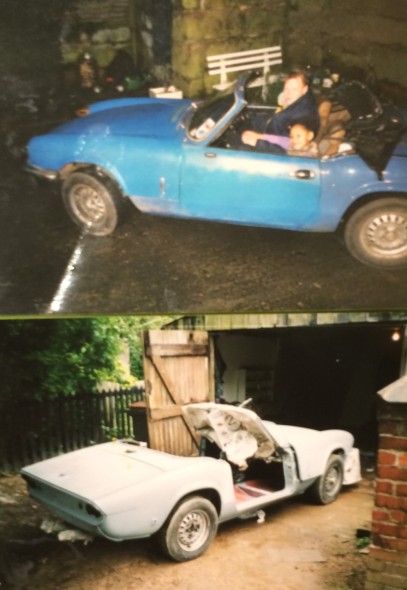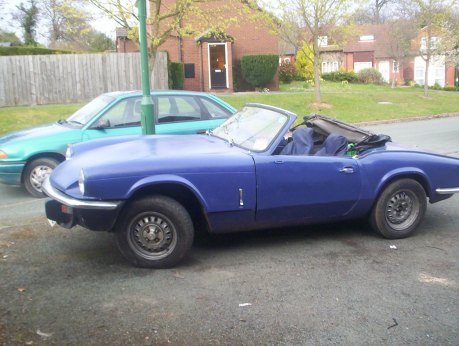The first car I have owned which could be classed as a classic was a Triumph Spitfire 1500 which I brought in 2003. When choosing a Triumph, I studied classic car magazines looking for ideas on the perfect starter classic. I decided to buy a Spitfire mainly because it has perfect sports car styling, it’s on a chassis so bodywork doesn’t have to be structurally faultless and most of all, they were cheap.
In the magazines, I saw that a garage called The Spitfire Graveyard had a good selection in stock. So, naively, my mate Matt and I and went off up to Sheffield with a pocket full of cash with the intention of buying a car.
We found the garage which was located in a lockup, down a side street, under a railway arch. Alarm bells should of sounded when the garage owner emerged from the site office (an old caravan) looking rather dishevelled. He was wearing an old suit that had distinctive kebab stains on the lapels, he smelt of booze and fags. We were told that we couldn’t have a test drive because he was still over the limit from the night before, but we could still have a look around.
The only car with a MOT within my price range was ALM604S. Inside the gloomy lockup, to the naively optimistic eye the car didn’t look too bad. It was taxed with a short MOT and ran well. I thought if it had a MOT then a years worth of decay would be easily fixed.
It was a cold and wet January afternoon. I had £620 burning a hole in my back pocket, so without too much inspection, I paid the man and drove back to Shropshire in the rapidly darkening winter gloom. Half way home the windscreen wipers stopped working and the hood started to leak. But I finally got there.
 The car, Matt and Yarna on the first night and the car in primer after months of welding.
The car, Matt and Yarna on the first night and the car in primer after months of welding.
After driving the car around for a week or so I took the car over to a friend who is a fantastically skilled welder fabricator. Kev was recovering from a nasty bike crash and was off work with a broken leg. Bored at home, so somehow he was persuaded have a look at the car. As we both thought that the car only needed a small hole repaired he foolishly/kindly agreed to help for the day.
When we removed the carpets and took the seats out, the job revealed itself to be much bigger than we both initially thought. Kev bravely persevered with the project and over the course of several months he ended up replacing both of the floor pans and both of the sills plus other smaller panels Writing this now, I do have a overwhelming sense of guilt for asking a friend with a broken leg to do all this work, but we did have a great laugh doing the project. A lot of the time was spent drinking tea and chatting. Friends would pop by to say hello. I think we felt an equal sense of achievement and relief when we finished the panel work.

Painted and on the road
Thanks to the heroic efforts of Kev, we finally got the spitfire MOT’d and back on the road. The reality of the ups and down’s of classic car ownership had started to reveal themselves. It wasn’t, however, going to put me off.
